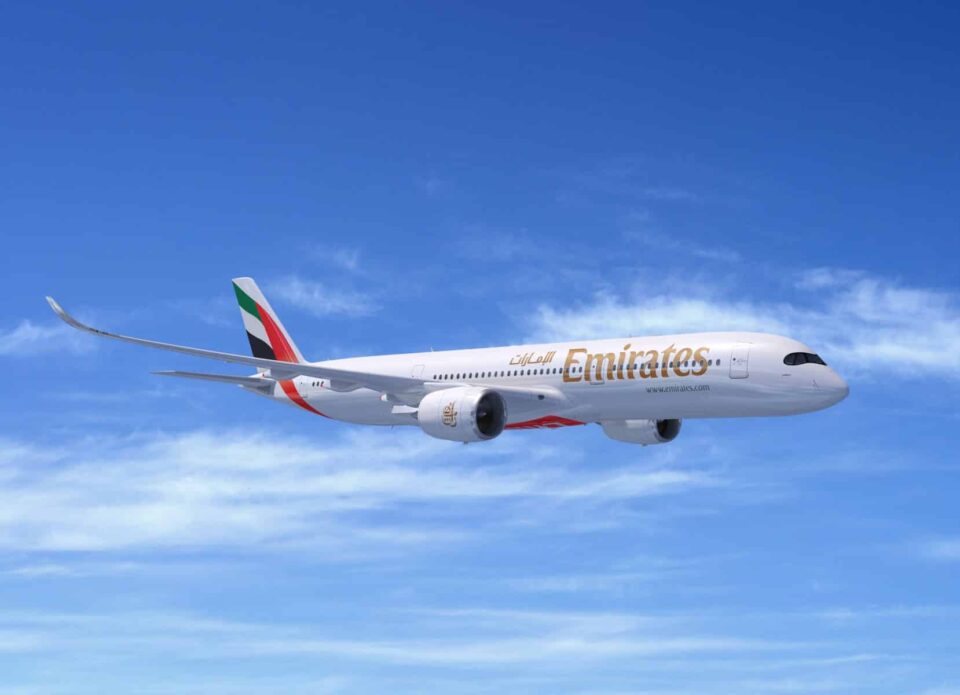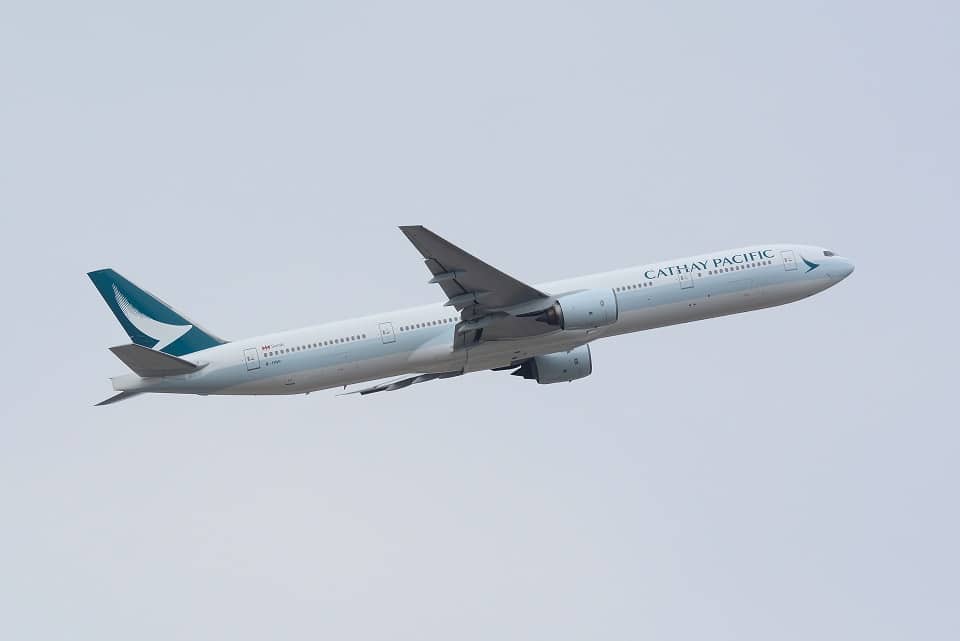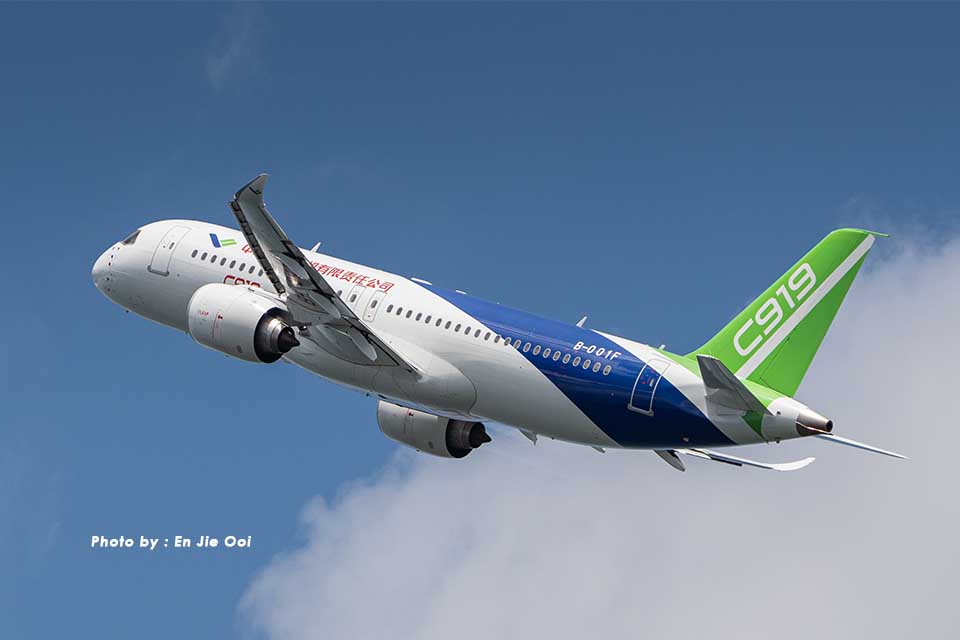Airlines
Emirates invests in high-speed inflight broadband onboard 50 new A350 aircraft

Emirates will offer passengers yet another opportunity to ‘fly better’, with new high-speed, inflight broadband powered by Inmarsat’s GX Aviation, onboard 50 new Airbus A350 aircraft – scheduled to enter service in 2024. The new agreement will significantly improve the passenger experience with enhanced connectivity and greater global coverage, even on flights over the Arctic.
The Airbus A350s will be the first Emirates aircraft to use the Global Xpress (GX) satellite network, which powers the first and only globally accessible broadband network in the world. This will guarantee that passengers can enjoy uninterrupted global connectivity, regardless of their destination, including the North Pole. The sophisticated high-speed capabilities of the broadband will allow Emirates passengers to use social media, browse the internet, and stay in touch with family and friends from the comfort of their seat.
The GX network that will power the Emirates inflight broadband currently consists of five Ka-band satellites and will be further enhanced with the addition of seven more satellite payloads as part of Inmarsat’s fully funded technology roadmap. This includes two Inmarsat-6s, the most sophisticated commercial communications satellites ever built, both of which are scheduled to enter service in 2023.
The Top 5 Films Seen on a Qantas Flight This is the listing(Opens in a new browser tab)
These will be followed by three additional satellites in geostationary orbit – adding speed, capacity, and resilience – and two in highly elliptical orbit, to enable the world’s only commercial mobile broadband service for aircraft flying in higher elevations and across the Arctic, such as routes between the Middle East and North America.
Emirates have also introduced connectivity enhancements for Skywards members – including complimentary internet access throughout the flight for all Skywards Gold or Silver members travelling in Business Class, in addition to First Class, and Platinum members travelling in any cabin class.
The plan for high-speed inflight broadband onboard A350’s is the latest addition to Emirates multi-billion-dollar investment into its onboard product and passenger experience; which also includes the largest known fleet retrofit project of 120 aircraft, extensive investment into menu development and food and beverage experiences, the planned introduction of next generation inflight entertainment systems on incoming aircraft.

Airlines
Cathay Pacific asks business class customers to bring their own cutlery

In an innovative move towards sustainability, renowned Hong Kong carrier Cathay Pacific has recently floated an unconventional idea to its business class customers.
Bringing their own cutlery sets onboard. This initiative, revealed through a member survey circulated within the airline’s “Cathay Lab” community – a platform comprising frequent business class travelers – has stirred a wave of curiosity within the aviation industry.
With sustainability becoming an increasing concern in aviation, Cathay Pacific’s survey aimed to gauge passengers‘ willingness to partake in various eco-friendly practices during their journeys.
Among the initiatives presented, including refilling reusable water bottles and recycling plastic, the prospect of bringing personal cutlery garnered significant attention. Some members expressed practical concerns, questioning the feasibility of carrying cutlery through airport security and the potential inconvenience for passengers unaware of regulations.
Others suggested that Cathay Pacific should simply provide reusable cutlery onboard instead. Furthermore, there were suspicions among some respondents that the BYO cutlery proposal might be a precursor to introducing additional charges, with one user humorously envisioning a scenario where the airline lends cutlery sets for a fee.
Despite the skepticism surrounding the proposal, Cathay Pacific’s exploration of innovative sustainability measures reflects a broader industry trend towards environmental consciousness.
Airlines
Air India and IndiGo’s Joint Initiative, Plans for 170 Wide-Body Aircraft

In a bold move that underscores their confidence in India’s burgeoning aviation sector, Air India and IndiGo have revealed ambitious plans to acquire a combined total of up to 170 wide-body aircraft.
This strategic investment marks a significant shift in the country’s aviation landscape, as it brings European aircraft manufacturer Airbus into a domain traditionally dominated by American giant Boeing.
With India positioned as one of the world’s fastest-growing aviation markets, the timing couldn’t be more opportune for such expansion endeavors. The aim is clear: to elevate India’s status as a global aviation hub by enhancing connectivity through direct flights between Indian cities and international destinations.
Currently, a substantial portion of India’s international air traffic relies on overseas hubs, particularly in the Gulf region. IndiGo’s announcement of firm orders for 30 A350-900 aircraft, with an option for an additional 70, signals its commitment to capturing a larger share of the long-haul market.
Meanwhile, Air India’s comprehensive order, unveiled last year, encompasses 70 wide-body planes, including a mix of A350 and Boeing 787 models.
Recognizing the potential for disruption in the long and ultra-long haul segments, aviation consultancy CAPA India has emphasized the pivotal role Indian carriers can play in driving innovation and transformation.
With the current combined fleet size of Indian airlines exceeding 700 aircraft, the stage is set for Air India and IndiGo to spearhead a new era of growth and connectivity in the Indian aviation sector.
Airlines
Air China Makes Landmark Deal: Orders 100 C919 Jets from COMAC

In a strategic move that could reshape China’s aviation industry, Air China has inked a monumental deal with Comac, signaling a significant shift in the nation’s commercial aircraft procurement landscape.
The agreement, valued at a staggering $10.8 billion based on list prices, entails the purchase of 100 Comac C919 jets, a resounding endorsement of the homegrown challenger to aerospace giants Airbus and Boeing.
The announcement, disclosed in a filing by Air China, underscores the airline’s commitment to bolstering its fleet with domestically manufactured aircraft. These C919 jets, slated for delivery between 2024 and 2031, are poised to amplify Air China’s operational capabilities and enhance its competitive stance in the global aviation arena.
The C919, a formidable competitor to Boeing’s 737 Max and Airbus’s A320neo, symbolizes China’s ambitious foray into the global aviation market. With Air China’s commitment to acquiring a substantial fleet of C919s, the aircraft is poised to carve out a formidable niche in the industry, challenging the dominance of established players.
Notably, Air China‘s existing fleet comprises an extensive array of Airbus and Boeing aircraft, showcasing its diverse operational portfolio.
With nearly 500 airplanes in service, including models from the A320 family and the 737 series, Air China’s decision to incorporate the C919 into its fleet underscores a strategic diversification strategy.
While Airbus has enjoyed notable success in China, buoyed by its local assembly line, Boeing has faced formidable challenges in recent years. However, Air China’s resolute investment in the C919 signals a paradigm shift, amplifying China’s quest for self-sufficiency in aviation.



























